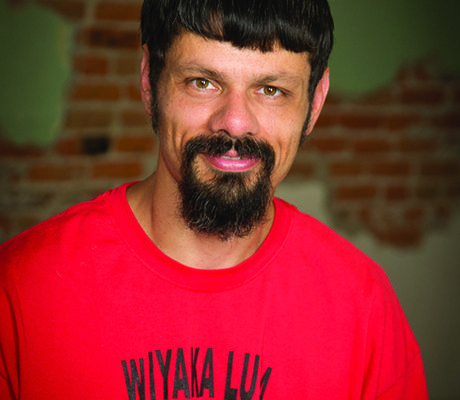“Take me, take me,” they whisper. “Not today,” I reply. “Maybe Sunday.”
Actually, my former work clothes do not talk, just seems like it some mornings. It has been close to two years since I wore slacks and a button-down shirt on weekdays while working at the Times-Herald. Now my attire is more casual — a couple pairs of jeans and well-worn t-shirts for starters to choose from, then a pair of workboots. There are extras to help support my back and wrist. A stocking cap, hoodie and coat are a must this time of year. On laundry day I sometimes wonder why everything needs such a thorough washing when I really would not consider working at the Keep Alliance Beautiful Recycling Center a dirty job?
Throughout the series “Dirty Jobs” with Mike Rowe, he visited several green industries, including at least one recycling company. I would not consider our jobs at KAB anywhere close to most of the workplaces depicted on the Discovery Channel series. When I describe what I do at the recycling center a more fitting term is “hands on.” We take the “dirty” out of the job to ensure our materials will not be rejected and move on down the supply chain to become new products for consumers.
Detailed in recent columns regarding KAB’s trip to Omaha, we collect and sort the recyclables that come through the center by hand. As for our most common material, how much does a bale of cardboard weigh? Anyone on our staff could translate it by armloads hefted into the baler as it fills up. Broken down, flat sheets handle and crush differently than intact boxes. Extra-large boxes take a little experience to bend and twist and stuff without the aid of a box cutter.
Gloves keep hands safe during sorting. My favorite are pairs with enough dexterity to handle about anything from plastic bottles to separating different types of paper. A good leather pair guard against tin can lids or broken glass. They are also great when what we find is dirty and needs to be thrown away.
Our main way of collecting is through the KAB trailers. Ideally, the type of material listed on the door is what end up in the black bin below. Taken off by hand, or sometimes with help of the forklift, there is always something that does not belong. In order to not handle that particular material twice we like to put it directly in the baler if possible. If not, that batch of paperboard (for example) goes into large cardboard boxes for input later. It is most difficult in the black totes where most of the material matches the label because we have to keep a careful eye out for what belongs somewhere else.
Over the months I have developed my own preferences on how to empty a bin or box into the bailer. My favorite is to dip a small tote and bale out the plastic or aluminum cans. Others like the scoop shovel.
Curbside recycling is perhaps the best example of “hands on.” We pick up the bags and piles of cardboard then sort over the next days and weeks with the aim of processing the material from a fortnight ago before gathering the latest batch. Convenience is a main attraction for curbside. Although some customers do, the contents are not required to be sorted. I have an array of totes for all the categories to be divided from the bags — larger containers for lighter items and smaller totes for heavier things such as glass. The same is true for my co-workers who have their own systems.
Within weeks of starting work at the recycling center everyone gets a feel of how to sort and prepare recyclables for shipping. Some days the hands on part means stomping on shredded paper or paperboard to compact it in the bin. Other times it is moving glass along into a former plastic and aluminum fertilizer container.
Quarterly, our office tallies our tonnage to date for the year. Our recycling center staff, collectively, knows how those thousands of pounds felt as we shepherded what could have been trash to a new path.

